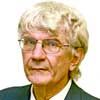San Juan is not an especially attractive city for tourists (not its fault at all and thus not intended as a criticism – that devastating 1944 earthquake caused its key buildings to be reconstructed as anything but monuments in random locations in order to hedge bets) but it does have an uncanny knack for being a venue for key turning-points in Argentine political history. Starting with that earthquake which famously brought Juan Domingo and Eva Perón together, thus giving the city a claim to be the cradle of Peronism (as it was earlier the birthplace of Domingo Faustino Sarmiento, a key foundational figure of the constitutional republic in the 19th century).
Then in 1991 San Juan could equally claim to be the keystone of the longest Peronist presidency in the form of the oxymoron of a stabilising earthquake, politically speaking. Hyperinflation had brought Carlos Menem to power in 1989 but he could find no handle on it (1,343 percent inflation in 1990) until convertibility was introduced on April Fool’s Day, 1991. As an economic plan it looked technically convincing but the million-dollar question was whether its disciplines were politically viable, given the Argentine electorate’s massive sense of entitlement.
That question received its first positive answer in the San Juan provincial elections of August, 1991. Until then the Bloquista provincial party had dominated local politics with a grip as solid as its name under strong-minded governors like Leopoldo Bravo and Carlos Gómez Centurión. Against this powerful local machine, the Peronists put up a weak candidate Jorge Escobar (so weak he only lasted a year as governor) – and won! This result could only be interpreted as a huge vote of confidence in dollar-peso parity from an inflation-stricken citizenry. Several weeks later the midterms pronounced nationwide what the mountainous province had already anticipated but Menem’s domination of Argentine politics for the rest of the last century could fairly be said to have been born in San Juan.
Last Sunday the foothills of the Andes produced a new political earthquake although not to the benefit of Peronism this time. To place it in perspective we need to roll the clock back a couple of months to May 14 when San Juan voted at every level except the gubernatorial since five days previously the Supreme Court had disqualified Peronist Governor Sergio Uñac for pushing his re-election luck. Uñac’s absence from the ballot did not unhinge his machine in any way – which seems to give the lie to government claims that last Sunday’s result was decided by the Supreme Court ban. At the legislative level the Peronists came within a whisker of a two-thirds majority (23 of the 36 seats) while at municipal level they won in 14 of the 19 departments (even if loss of the provincial capital by some 9,000 votes might be seen as a foreshock).
Against that context and with the incumbent surname on the gubernatorial ballot (the outgoing governor’s brother Senator Rubén Uñac), last Sunday’s result was an incomprehensible surprise, even more so because not only did Senator Uñac lose the overall race to Radical deputy Marcelo Orrego but also the Peronist primary to ex-governor José Luis Gioja (and by a considerable margin). Within a broader national context last Sunday’s gubernatorial election in San Juan can be rated as a game-changer after an almost unbroken streak of incumbent wins. So far this year 13 provinces have defined their future governor and while the name has not always been the same (five re-elections) the ruling party has always won except in two cases where it was uprooted by its own offshoots – former lieutenant-governor Rolando Figueroa in Neuquén and ex-governor Claudio Poggi in San Luis. San Juan is thus the first genuine opposition win – will it now herald the trend for the national elections, just as in 1991?
Last Sunday’s election night was the shortest because it was the simplest – just eight men and two women (with their running-mates, of course) bidding for the top job. Running as Unidos por San Juan, the Juntos por el Cambio opposition coalition fielded four of these candidates who polled 51.15 percent of the vote between them with the lion’s share going to Orrego – almost an absolute majority in his own right (49.36 percent). None of the three also-rans even reached one percent – 0.95 percent for lawyer Marcelo Arancibia, 0.47 percent for libertarian businessman Sergio Vallejos (formally backing Patricia Bullrich if linked to Javier Milei) and 0.37 percent for PRO deputy Eduardo Cáceres. Since all three are aligned with Bullrich while City Mayor Horacio Rodríguez was gloating at Orrego’s side on election night, a huge boost for him. San Juan would also seem to be swimming against the tide in the PRO primary – it remains to be seen if decisively.
The Peronists ran badly behind on 44.26 percent with former two-term governor Gioja (27.27 percent) gaining a double-digit lead over the hapless Senator Uñac (just shy of 17 percent) despite the local machine backing the latter. Not content with Vallejos, three more libertarians ran within a Frente Desarrollo y Libertad mustering just 3.8 percent in a messy campaign with tensions between themselves and with Milei – Agustín Ramírez (1.81 percent) radiologist Paola Miers (1.27 percent) and international trade consultant Yolanda Aguero (0.71 percent). Finally, teacher Cristian Jurado scraped 0.8 percent for the Frente de Izquierda Unida. Turnout was over 70 percent of the 603,276 eligible to vote.
So will last Sunday’s election go down in history as yet another turning-point for San Juan like its 1991 predecessor? The surprise ending to 20 years of Peronist provincial government could mark a grand rejection of abuse of power or it could boil down to minor details (an unprepossessing candidate with his younger brother’s photograph next to his name on the ballot and a minimal legislative output in the Senate). In just over three months we will begin to know.



















Comments